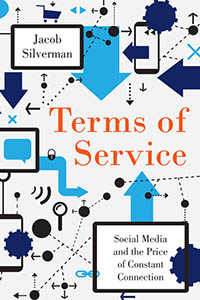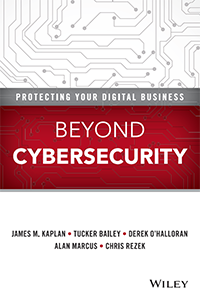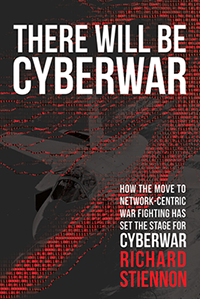5 books for your reading list

There are important lessons for federal IT managers in recent fiction and nonfiction books alike.

1. “Terms of Service: Social Media and the Price of Constant Connection”
by Jacob Silverman
Journalist Jacob Silverman applies a corrective critique to the idea that technical progress is inevitably determined by what is possible rather than what might be desirable or useful. He pushes back against the tag of “neo-Luddite,” but in a precise sense Silverman’s first book embodies some Luddite sensibilities — the idea that there is some logic to smashing up a new machine rather than being rendered disposable or irrelevant.
The book takes a broad look at the development of social media and the corporate ideology that Silverman sees embedded in the growth of connected networks of users sharing their personal information, preferences, desires, thoughts and feelings — not only with their real-life friends and family, but also with a more nebulous array of virtual “contacts” and marketers.
To Silverman, Facebook, Twitter and other networked services — including sharing economy platforms like Uber — are selling “a technocracy of benevolent but total surveillance.” His argument is that we have not so much made a decision to buy into this new reality as drifted rudderless into it. “Terms of Service” can read like a tract at times, but is it also offers a useful perspective as agencies push headlong into “social gov.”

2. “Beyond Cybersecurity: Protecting Your Digital Business”
by James M. Kaplan, Tucker Bailey, Derek O’Halloran, Alan Marcus and Chris Rezek
The Andy Ozments of the world might find this to be remedial reading, but “Beyond Cybersecurity” delivers real value for the rest of us.
Written by technologists from McKinsey and Co. and the World Economic Forum, the book targets private-sector executives who aren’t giving cybersecurity as much thought as they should. That shortcoming is all too common in government as well, and the authors go deep enough to truly educate without driving away readers who don’t make a habit of carefully parsing technology standards.
The fundamental message is simple if somewhat distressing: “Cybersecurity, as it is practiced today, is hurting large institutions’ ability to derive value from technological innovation and investment,” the authors write. And the impact is most keenly felt when it comes to cloud computing and mobile technology.
Over the course of 256 pages, they map the trends that have created this situation and the building blocks required to begin to change it.

3. “Your Strategy Needs a Strategy: How to Choose and Execute the Right Approach”
by Martin Reeves, Knut Haanaes and Janmejaya Sinha
This book takes a meta look at business strategy by exploring five major schools of strategic thinking before proposing the concept of a “strategy palette” in which leaders synthesize elements from each of the offerings.
As the authors — all of whom hail from the Boston Consulting Group — break down the pros and cons of myriad business strategies, they sprinkle in accounts of real-world business decisions. Tech giants provide examples of visionary and shaping strategies, while American Express illustrates renewal in action.
In the depths of the 2008 crisis, American Express faced an uncertain future and a cash-strapped environment familiar to many federal leaders. But the company survived and thrived by slashing spending on professional services while maintaining customer service budgets and investing in future growth.
“Your Strategy Needs a Strategy” targets corporate chieftains, not agency CIOs. But the many mini-sagas provide ample inspiration for federal leaders seeking to put their own “strategy palette” to use.

4. “There Will Be Cyberwar: How the Move to Network-Centric War Fighting Has Set the Stage for Cyberwar”
by Richard Stiennon
Richard Stiennon’s book opens with an alarming fictional scenario: The Chinese military has used cyber and electronic weapons to disable U.S. naval forces guarding Taiwan. Stiennon scripts a congressional report, dated May 2018, that diagnoses what went wrong. Among the findings is that American spooks were fooled by the intentions of China’s alleged state-sponsored hacking of the U.S. industrial base.
“While stealing designs of advanced military systems such as the Joint Strike Fighter and other weapons platforms was evident, it was not clear that the purpose was to discover weaknesses in those systems that the People’s Liberation Army could exploit in conflict,” he writes.
The implicit warning of this fictional scenario, of course, is that it might not be fiction for long — and that it would be a shame, despite the writing on the wall, to read about it in the dry, post-mortem language of a congressional report.
Stiennon, founder of cybersecurity analysis firm IT-Harvest, has made his case to FCW readers about the cyber vulnerabilities inherent in big Pentagon weapons systems like the F-35 Joint Strike Fighter jet. He expands on that argument in this book and reflects on what is and isn’t known about U.S. cyber capabilities.
“We do know, thanks to the numerous breaches and failures of military operations and weapons systems, that the U.S. is woefully unprepared to counter theater cyberwar,” he writes.
Although he conjures scenarios that probably aren’t far off, Stiennon’s prescriptions for bolstering network defenses are focused on present, rather than futuristic, capabilities. He recommends deploying encryption schemes across the battle commands and hardening the Defense Department’s IT supply chain.
The book is an enjoyably brisk read that blurs the lines between what’s happening in cyberspace and what’s on our doorstep. As the author understands, hacking — and defending against it — takes imagination.

5. “Ghost Fleet: A Novel of the Next World War”
by P.W. Singer and August Cole
This science fiction novel imagines a 21st-century cold war between the United States and Russia that’s fought not only on land, air and sea but also online and in outer space — and all with weapons and systems co-developed by the federal government and Silicon Valley.
The book was co-authored by two leading tech experts, P.W. Singer and August Cole, who are on the cutting edge of national security. The science fiction-like trends and technologies in the book are real, according to the authors, and could illustrate the future of a more coherent relationship between Silicon Valley and Washington.
Singer and Cole advocate a closer, more agile partnership between the Defense Department, the federal government and Silicon Valley in developing federal systems and weapons.


